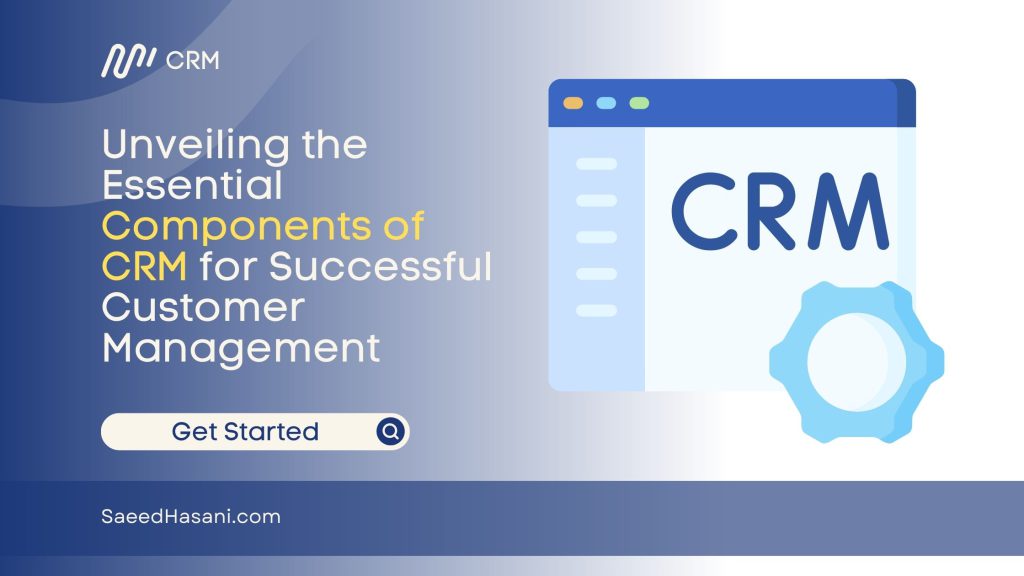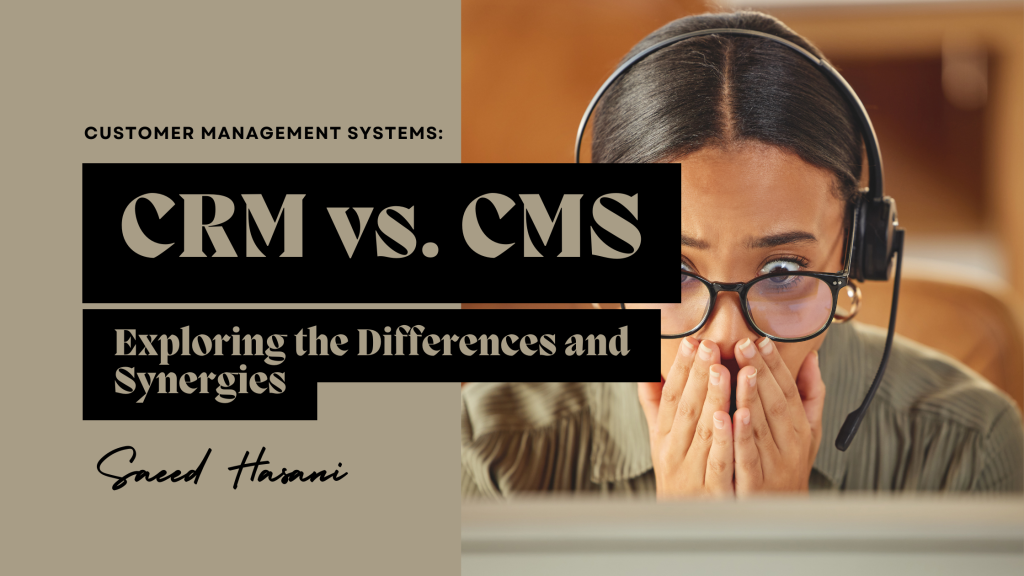What is a Customer Success Manager? 19 Ways to Create a Positive Experience!

Companies hire Customer Success Managers (CSMs) to ensure that their customers have a positive experience using their products or services. CSMs work closely with customers to understand their needs, address any issues or concerns they may have, and help them achieve their goals using the company’s products or services.
In this article, I want to show you, how a Customer Success Manager can help you as a business manager to create a positive experience for your customers.
Content Overview:
What is a Customer Success Manager?
CSM is defined as responsible for managing the customer experience and ensuring that customers get the most from the product and as the proactive relational engagement of customers to ensure the value potential of product offerings is realized by the customer.
Also, CSM is tasked with uniting customer experience and customer engagement toward proactively maximizing customers’ value-in-use, considering customers’ financial, social, operational, and strategic value .
At last, the CSM’s role is to increase the perceived value. But what is perceived value and how to improve it?
What does a customer success manager do?
A Customer Success Manager, or CSM, is like a superhero for clients and customers. They’re the ones who swoop in to ensure customers are not just satisfied, but really thriving with whatever product or service the company offers. Think of them as a mix between a guardian angel and a strategic advisor.
Here’s what they typically do:
- Onboarding and Education: When a customer first signs up, the CSM is there to welcome them, show them the ropes, and make sure they know how to use all the cool features of the product.
- Support and Problem-Solving: Whenever a customer hits a snag or has a question, the CSM is on it, helping to troubleshoot issues and provide solutions. They’re all about making sure any roadblocks are cleared so the customer can keep moving forward smoothly.
- Feedback Loop: CSMs are the bridge between customers and the product team. They gather customer feedback, both the good and the bad, and relay it back to help improve the product. They’re the customer’s voice within the company.
- Renewals and Expansion: They also keep an eye on contract renewals, making sure customers are happy enough to want to stick around. Plus, they look for opportunities to upsell or cross-sell, but only when it genuinely benefits the customer.
In short, Customer Success Managers are all about making sure customers get the most out of their purchase—it’s a win-win for everyone!
How does a CSM increase perceived value?
Customers in business markets perceive value in three different situations: “expected value in use,” “experienced value in use,” and “relationship value.”
“Expected value in use” (VIU) is the value that drives customers to agree to an exchange with a provider, and it is a point-in-time assessment of future value. Customers perform this assessment the moment they enter into an exchange agreement with a supplier, such as when they buy a product, sign a service contract, or enter into a subscription.
The expected VIU is based on the promises made in a supplier’s CVP (customer value proposition) and reflects a customer’s expectation regarding goal achievement through the future use of an offering.
“Experienced value in use” is the value perceived when customers use solutions, and “relationship value” occurs when customers reflect on and summarily assess a business relationship with a supplier .
Business customers do not perceive value only on a transactional level, but also in customer-supplier relationships.
The shift towards ongoing business relationships fostered the practical importance and conceptualization of relationship value in academia.
Relational value positively or negatively affects assessments of future transactions’ expected value in use elements.
11 responsibilities of a customer success manager
A Customer Success Manager (CSM) has a pretty dynamic role that keeps them on their toes. Let’s dive into their responsibilities, and I’ll sprinkle in some examples to bring each point to life:
- Onboarding Clients: When a new customer comes aboard, the CSM is there to guide them through setting up and learning the product. For instance, if it’s a software tool, they might host a live tutorial or provide a step-by-step guide tailored to the customer’s needs.
- Product Adoption: They ensure customers are using the product effectively. For example, if a customer isn’t utilizing a key feature that could really benefit them, the CSM might set up a special training session to demonstrate its value.
- Customer Advocacy: Acting as the customer’s champion internally, they bring customer feedback directly to the development team. Say a few customers suggest an improvement or a new feature; the CSM would argue their case to influence future updates.
- Renewals and Upselling: When it’s time to renew contracts, the CSM reviews the customer’s usage and satisfaction to recommend continued service or an upgraded package. They might say, “Based on your usage stats, moving to our premium plan could cut your workload by 20%.”
- Regular Check-ins: CSMs schedule regular meetings to keep the lines of communication open. During these check-ins, they might discuss new updates, gather feedback, and address any concerns the customer might have.
- Crisis Management: If something goes wrong, like a service outage or a major complaint, the CSM steps in to smooth things over and work towards a resolution. They’re the calm in the storm, assuring the customer and coordinating with the tech team to fix the issue.
- Training and Education: They provide ongoing education and resources to help customers get the most out of the product. For example, they might organize webinars or send out informative newsletters with tips and tricks.
- Building Relationships: It’s all about forging strong relationships. A CSM might remember a client’s business anniversary or send a congratulatory note when a client achieves something big with their product, making the business relationship feel personal and cared for.
- Reporting and Analytics: They monitor customer health scores by analyzing usage data and feedback to identify trends or potential issues before they become problems. They might create reports showing how much time and money the product is saving the customer.
- Feedback Loop Closure: When a customer’s feedback leads to a change or update, the CSM ensures the customer knows their voice is heard and appreciated, reinforcing the value of their suggestions.
- Customer Success Strategy: CSMs also play a strategic role, in developing tailored plans to enhance the overall customer experience. They might set goals for customer engagement, plan retention strategies, and measure success through specific metrics.
Each responsibility is a piece of a larger puzzle that keeps customers happy and businesses healthy!
19 ways to create a positive experience from products by hiring a Customer Success Manager
The 19 methods introduced here will help increase the perceived value of the customer through the relationship you build with them.
Each of these ideas is applicable at some stage of product use and marketing teams can use their combination.
#1 Onboarding
As a Customer Success Manager, I want to create personalized onboarding plans for each new customer, so that they can quickly get up to speed and start using our product effectively.
Story #1
The solution realization process involves two main activities: onboarding and solution adaptation.
Onboarding, which is the starting point for solution realization, has three steps: preboarding, internal handoff, and customer handoff.
Preboarding is introduced before the deal is closed and involves the introduction of the customer success (CS) team to the customer.
Internal handoff involves transferring knowledge about the customer’s goals from the sales team to the CS team and planning the onboarding process.
Poorly defined responsibilities and unclear expectations can cause the onboarding process to fail at the internal handoff stage.
Establishing formal processes can ensure a successful knowledge transfer between the sales and CS teams.
The internal handoff topics proposed to structure the handoff from sales to CS include basic customer information, a description of the products and services sold, anticipated outcomes from the solution, an understanding of the deal value, and information about the people and organizations involved in the engagement.
The customer handoff stage of onboarding ends by providing a clear vision of how the firms will work together, including greater specificity on how to reach goals in a project plan.
During the customer handoff, when the onboarding process is complete, the next steps and any important issues that remain unresolved should be communicated to customers by the CS managers.
#2 Solution Adaptation
As a customer success manager, I want to ensure a seamless solution adaptation phase for our customers, so that they can successfully integrate our solutions into their business processes and achieve their desired outcomes.
Story #2
During the solution adaptation phase, CSM customizes its solutions to integrate them into the customer firm’s business processes and helps customers finally use these offerings.
Customers’ expectations and motivation are high during this phase, but various hurdles can arise that prevent or delay a solution’s successful implementation.
Supplier firms’ project management skills and change management experience are critical to successful solution adaptation.
Solution adaptation can be instructive for suppliers, as they can draw conclusions from insights and identify their most successful customers’ behaviors to generalize effective approaches.
Some researchers suggest asking questions to determine the common characteristics of successful customers, such as strong project management or technical skills and solid management support. Also, building a team to elaborate on and verify the identified similarities is suggested.
Fostering collaboration during a solution’s technical implementation is emphasized as essential to creating a seamless customer experience.
For example, Salesforce’s Trailblazer platform provides ready-made learning programs, videos of experts, and live events to help customers start using Salesforce products in an entertaining learning style.
#3 Maintain a knowledge base
As a Customer Success Manager, I want to create and maintain a knowledge base of best practices and tips for using our product, so that customers can access helpful resources whenever they need them.
Story #3
#4 Upselling and Cross-selling
As a Customer Success Manager, I want to identify opportunities for upselling and cross-selling to existing customers, so that we can maximize revenue and provide even more value to our customers.
Story #4
CSM effectiveness establishes the groundwork for the growth of solutions, whether it be via expansion such as upselling or cross-selling, or through customer advocacy.
#5 Celebrate customer successes and milestones
As a Customer Success Manager, I want to celebrate customer successes and milestones, so that they feel recognized and valued as part of our community.
Story #5
#6 Training sessions and Webinars
As a Customer Success Manager, I want to provide regular training sessions and webinars for customers, so that they can continuously improve their skills and knowledge of our product.
Story #6
In addition to essential knowledge of the learning path, fairs, conferences, and courses provide a platform for a supplier and a customer to exchange views on value enhancement potential and bring together customers who face similar challenges.
From the perspective of knowledge distribution, value creation can be divided into three categories: empowering the customer firm’s employees, resource-related measures, and solution expansion.
Empowering the customer firm’s employees includes customer support, training, consulting services, and customer-supplier workshops.
#7 Customer feedback loop
As a Customer Success Manager, I want to create and maintain a customer feedback loop, so that we can gather feedback from customers on an ongoing basis and use it to improve our product and customer success efforts.
Story #7
#8 Community of customers
As a Customer Success Manager, I want to build and maintain a community of customers, so that they can share best practices and tips with each other, and feel connected to our brand.
Story #8
High-performing CS managers are compared to farmers who cultivate something more stationary and growing, in contrast to hunters who are more like salespeople .
As much as CSMs connect more with customers, they can impact growing a result like fruit for farmers. To connect more, they can run a community of customers that includes full communication with customers.
#9 Industry trends and best practices
As a Customer Success Manager, I want to stay up to date on industry trends and best practices, so that I can provide relevant advice and recommendations to customers.
Story #9
#10 Targeted email campaigns
As a Customer Success Manager, I want to create and deliver targeted email campaigns to customers, so that we can share product updates, tips, and other valuable information with them.
Story #10
#11 Customer success playbook
As a Customer Success Manager, I want to create and maintain a customer success playbook, so that new team members can quickly learn our processes, best practices, and customer success strategies.
Story #11
#12 Monitor customer usage
As a Customer Success Manager, I want to monitor customer usage of our product, so that I can proactively identify potential issues and address them before they become major problems.
Story #12
#13 Analyze customer data
As a Customer Success Manager, I want to analyze customer data and metrics to identify trends and patterns, so that we can make data-driven decisions to improve our product and customer success efforts.
Story #13
CSM draws on the foundation of customer relationship management (CRM) by considering customers’ demographic and transactional data, but it goes further by utilizing streaming sensor data and other unstructured customer data to derive value-in-use insights and predict customers’ future value-in-use.
#14 Monitor customer satisfaction metrics and NPS
As a Customer Success Manager, I want to monitor customer satisfaction metrics and NPS scores, so that we can measure and improve our customer success efforts over time.
Story #14
#15 Customer dashboard
As a Customer Success Manager, I want to create and deliver customized reports and dashboards to customers, so that they can track their progress and success using our product.
Story #15
#16 Track customer requests
As a Customer Success Manager, I want to manage and track customer requests and issues through a centralized system, so that we can quickly respond to their needs and provide timely resolutions.
Story #16
#17 Trusted advisor
As a Customer Success Manager, I want to be a trusted advisor to my customers and provide strategic guidance to help them achieve their goals.
Story #17
Customer Success Managers (CSMs) are advocates for the customer and trusted advisors who coordinate resources toward customers’ success.
Also, CSM is responsible for customer goal management, stakeholder management, and learning management in order to proactively maximize customers’ value-in-use.
Customer goal management entails understanding customer goals, influencing customer strategies to achieve success, and shaping customer goals with the seller’s offering.
Customer stakeholder management entails understanding the various entities that contribute resources to the customer firm.
Learning management entails onboarding users and helping them acquire the necessary knowledge and skills to fully utilize the seller’s offering in their goal pursuit.
If the CSM perceive these three elements can guide customers to achieve more goals in their career.
#18 Solutions Hall!
As a customer success manager, I wanted to create a Solutions Hall so that prospective customers could see our technical solutions in action and gain a better understanding of how they could be integrated into their operations.
Story #18
SEW-EURODRIVE, a German supplier of gear motors and automated solutions, operates an application hall where its technical solutions are installed. Prospective customers are invited to visit the company to see these solutions.
A Solutions Hall gives some clues to potential customers to find out themself ways. It’s a magical way to communicate with consumers and provide solutions that are near their wants and opinions.
#19 Customer advisory boards
As a customer success manager, I want to maximize the potential of our existing customer base to generate referrals through Word-of-Mouth marketing by identifying the four types of advocates, setting up a customer referral program, and creating a customer advisory board, so that we can achieve sustained growth and success for our company.
Story #19
In the solutions business world, most referrals come from Word-of-Mouth (WOM) directly, which a solution supplier cannot control.
In general, we have four types of advocates: Educators, Validators, Status Seekers, and Collaborators.
Firms may set up customer referral programs to incentivize loyal clients and advocates to refer their networks to a supplier firm.
Customer advisory boards (CAB) can motivate high-profile advocates to discuss future business developments and run a referral marketing program.
Conclusion
Hiring a Customer Success Manager can help companies ensure that their customers have a positive experience using their products or services.
A CSM’s role is to increase the perceived value of a company’s products or services by uniting customer experience and customer engagement towards proactively maximizing customer value-in-use.
This can be done through various methods, such as creating personalized onboarding plans, ensuring seamless solution adaptation, maintaining a knowledge base of best practices, and identifying opportunities for upselling and cross-selling.
By implementing these methods, businesses can increase customer satisfaction, maximize revenue, and build lasting relationships with their customers.
What other ways do you think there are? Write them down for me!
Sources:







Responses